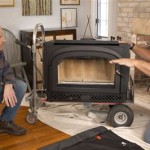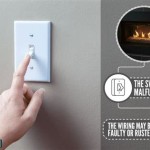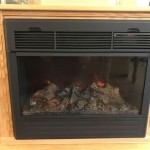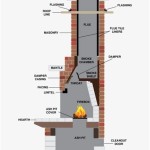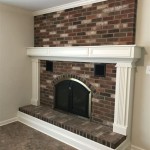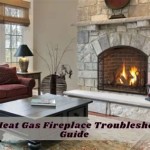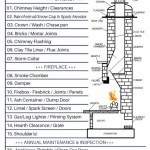Fireplace Repair Chicago: Ensuring Safety and Efficiency
Fireplaces offer aesthetic appeal and a source of supplemental heat, making them a valuable asset in Chicago homes. However, consistent and proper maintenance is crucial to ensure their safety and optimal performance. Neglecting fireplace repair can lead to various hazards, including carbon monoxide leaks, chimney fires, and decreased heating efficiency. This article addresses common fireplace issues, the importance of professional repair services in Chicago, and preventative measures homeowners can undertake to prolong the lifespan and ensure the safe operation of their fireplaces.
The harsh Chicago winters demand reliable heating systems. A malfunctioning fireplace not only fails to deliver adequate warmth but also poses significant safety risks. Understanding the potential problems and addressing them promptly is essential for maintaining a safe and comfortable home environment. Numerous factors can contribute to fireplace malfunctions, ranging from issues with the chimney to problems with the firebox and surrounding components. Ignoring these issues can result in costly repairs down the line and, more importantly, endanger the occupants of the home.
Chicago's climate, characterized by significant temperature fluctuations and periods of heavy snow and rain, can exacerbate fireplace problems. Freeze-thaw cycles can damage chimney masonry, leading to cracks and deterioration. Moisture intrusion can also compromise the integrity of the firebox and other internal components. Regular inspections and timely repairs are therefore particularly important for Chicago homeowners to prevent long-term damage and maintain the functionality of their fireplaces.
Common Fireplace Problems Requiring Repair
Several issues can indicate the need for fireplace repair. One common problem is a damaged or deteriorating chimney. Cracks in the masonry, spalling bricks, or a crumbling chimney crown can allow water to enter, leading to further damage and potential structural instability. These issues necessitate prompt attention to prevent costly repairs and ensure the chimney's integrity.
Another prevalent problem is creosote buildup in the chimney flue. Creosote is a highly flammable substance that accumulates as a byproduct of burning wood. Excessive creosote buildup increases the risk of chimney fires. Regular chimney sweeping is crucial to remove creosote and prevent such fires from occurring. Signs of excessive creosote include a strong, smoky odor, restricted chimney draft, and visible buildup on the flue walls.
Damaged or malfunctioning dampers can also significantly impact fireplace efficiency. A damper is a device that controls airflow through the chimney. A damaged or improperly sealed damper allows heated air to escape from the home when the fireplace is not in use, increasing energy consumption. Conversely, a stuck damper can restrict airflow during a fire, leading to smoke backdraft and potential carbon monoxide buildup. A proper functioning damper is key to both energy efficiency and indoor air quality.
Furthermore, issues within the firebox itself, such as cracked firebricks or damaged grates, can compromise the safety and efficiency of the fireplace. Cracked firebricks can allow heat to escape, potentially damaging the surrounding structure. A damaged grate can hinder proper airflow and combustion, resulting in incomplete burning and increased smoke production. Regular inspections of the firebox are essential to identify and address these problems promptly.
The Importance of Professional Fireplace Repair Services
While some minor fireplace maintenance tasks can be performed by homeowners, complex repairs and inspections should be entrusted to qualified professionals. Fireplace repair specialists possess the necessary knowledge, experience, and equipment to accurately diagnose and address a wide range of fireplace problems. Attempting to repair a fireplace without proper training can be dangerous and may exacerbate existing issues.
Professional fireplace repair services typically include a comprehensive inspection of the entire fireplace system, including the chimney, firebox, damper, and surrounding components. This inspection allows technicians to identify any existing or potential problems and recommend appropriate solutions. Reputable companies often utilize specialized tools and techniques to ensure a thorough and accurate assessment.
Furthermore, professional repair services ensure that all repairs are performed according to industry standards and local building codes. This is particularly important in Chicago, where building codes are often stringent and designed to ensure public safety. Adherence to these codes is essential for avoiding fines and ensuring the long-term safety and functionality of the fireplace.
Moreover, professional fireplace technicians can provide valuable advice on fireplace maintenance and operation. They can educate homeowners on proper burning techniques, fuel selection, and cleaning procedures. This knowledge empowers homeowners to maintain their fireplaces effectively and prevent future problems from arising.
Preventative Measures for Fireplace Maintenance
Preventative maintenance is crucial for extending the lifespan of a fireplace and minimizing the need for costly repairs. Regular chimney sweeping is perhaps the most important preventative measure. It is recommended to have the chimney swept annually, or more frequently if the fireplace is used extensively. This removes creosote buildup and other debris that can obstruct the flue and increase the risk of chimney fires.
Periodic inspections of the firebox, damper, and surrounding components are also essential. Homeowners should visually inspect these areas for signs of damage, such as cracks, spalling, or rust. Any irregularities should be addressed promptly to prevent further deterioration. Checking the damper's functionality regularly ensures proper airflow and prevents energy loss.
Using the correct type of fuel is another crucial aspect of fireplace maintenance. Seasoned hardwoods, such as oak or maple, burn cleaner and produce less creosote than softwoods or unseasoned wood. Avoid burning trash, paper, or other materials that can produce excessive smoke and creosote buildup. Burning properly seasoned wood is key to a clean and efficient burn.
Proper ventilation is also essential for safe fireplace operation. Ensure that the room is adequately ventilated when the fireplace is in use. This allows for proper airflow and prevents the buildup of carbon monoxide. Install and maintain carbon monoxide detectors in the home to provide an early warning of any potential leaks. Prioritizing safety and proper ventilation are paramount for a healthy home.
Finally, consider scheduling regular professional inspections of the fireplace system. A qualified technician can identify potential problems that may not be apparent to the homeowner and recommend preventative measures to avoid costly repairs. A proactive approach to fireplace maintenance is the best way to ensure its safe and efficient operation for years to come.

Chimney Sweep Chicago Fireplace Co
Masonry Fireplace Repair And Restoration Chicago

Chicago Fireplace Repair Inspection And Chimney Authority

Fireplace Repair Maintenance Lindemann Chicago Services

Chicago Chimney Repair Capital Corp

Delta Chimneys Fireplace And Chimney Repair Nearby Chicago
Delta Chimneys Chimney Repair Near Me Buffalo Grove

Bart Fireplace Chimney Repair Restoration Rebuild Chicago Il

Top 10 Best Fireplace Installation In Chicago Il Updated February 2024 Yelp

Chicago Chimney Sweep Cleaning Fireplace Repair

